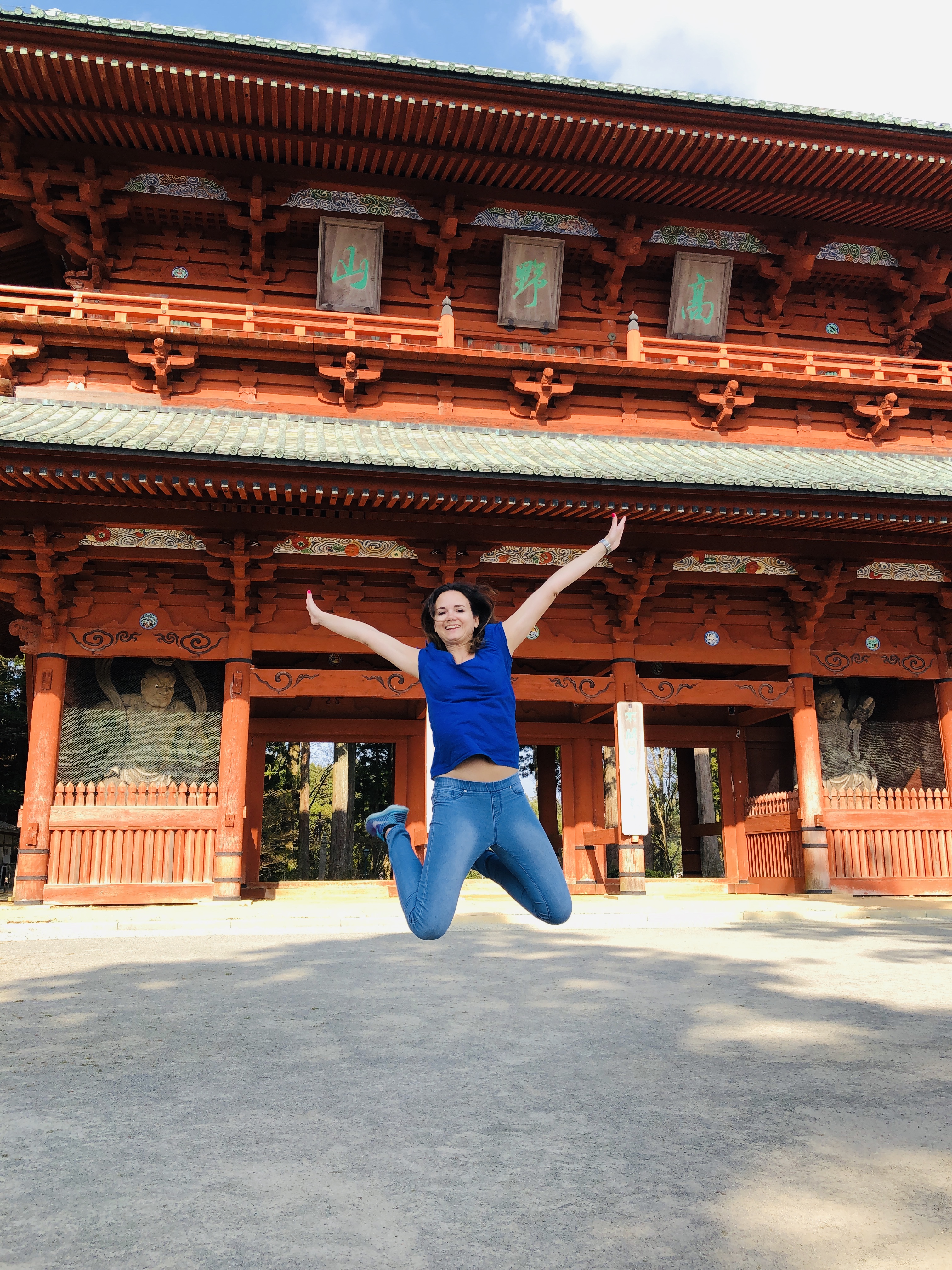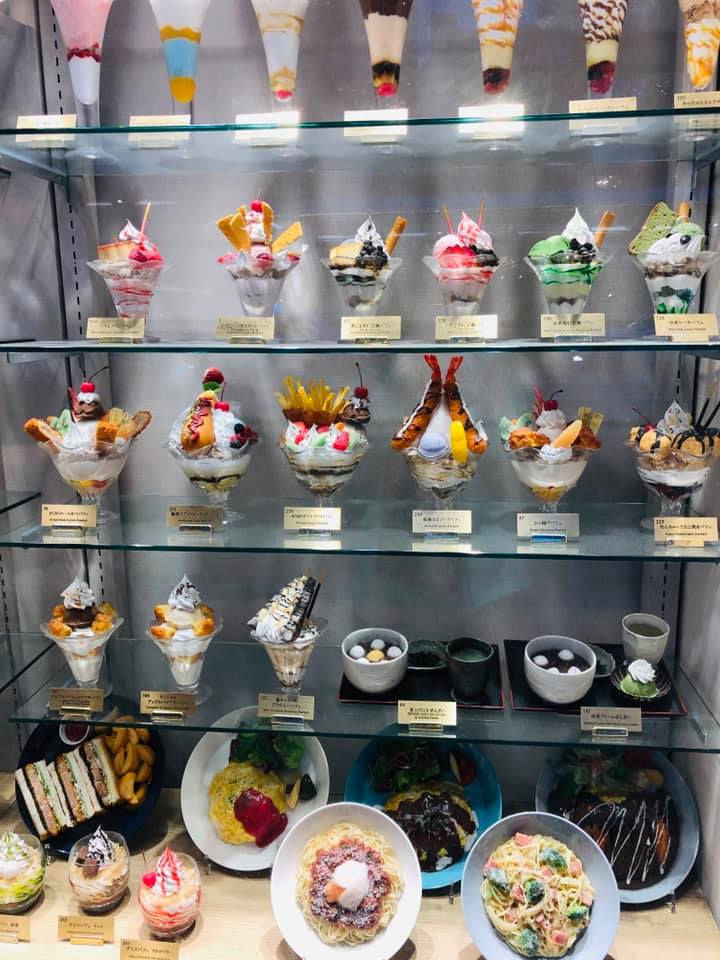Day 3: en-route to Koyasan
- Clémence

- May 12, 2019
- 4 min read
Updated: Jul 14, 2019
We used the luggage-transfer service from our hotel to our next hotel in Kyoto. It was really cheap, about 10 pounds per luggage and it was such a relief not to have to carry your whole luggage everywhere we go. We used this service three times in total and we were very happy about it. Japanese are so organised!
Koyasan, south of Nara city (but still in Kansai), is the still active monastic centre and is associated with the priest Kukai (known after his death as Kobo Daishi); Kukai and his followers began construction at Koyasan in 816 having received permission from Saga, the 52nd Emperor of Japan. Koyasan is one the three sacred mountain listed in the Unesco World Heritage.
To go to Koya-san, we used the second day of our Kansai Thru Pass (you do not need to use the pass for three days in a row). The Nankai Koya Line provides the best connection between Osaka and Mount Koya. Using this line we travelled from Osaka’s Nankai Namba Station to Gokurakubashi Station at the base of Mount Koya. From Namba station, you can decide to take a direct & quicker train but you would need to pay an extra for it. We took the train covered by the pass and had to make a quick change but it was very smooth (on the same platform) and we particularly enjoyed the last hour of the ride which was very scenic in a very old train. At Gokurakubashi Station we transferred directly to the Koyasan Cable Car which will take you up the mountain in 5 minutes for 390 yen. From Koyasan Station you can then take a bus to the main tourist and accommodation areas (you go in the bus and you pay your ticket at the end to the driver).
The town/village of Koyasan is very small and very quiet. Keep in mind that there are around 120 temples in Koya-san and about half of them are welcoming and hosting visitors.

We stayed at Koyasan Zofukuin which was actually very well located as right next to the main monastic complex, which is the headquarters of the Shingon school of Esoteric Buddhism. We went to check out and one monk gave us a tour of the facility as well as explained to us the dinner and breakfast time and the key "rules". When you book in one of those temples, you tend to have a package including dinner and breakfast - most vegetarian (I will come back to it) and you can join the pray in the early morning... Toilets and bathroom are collective areas and bedrooms are relatively spacious but very traditional!
After our check-in, we tried to look for a place to have lunch but I have to say that we could not find many options. It was extremely limited and we did not want a proper sit-down lunch... we ended up eating chicken skewers in the parking of the Family Mart (probably the only supermarket we could actually see in the town!).
Picture of the entrance to the Zofukuin temple:


After that, we headed to the monastic complex and started our visit. We visited various temples and pagoda, Garan, Sai-to, Chumon, Kondo and Konpon Daito (50m tall great pagoda). This area located in the West of the city is quite nice as is surrounded by a forest. To be fair, given the complex is built in wood, this is not surprising that it was destroyed by fire six times with the current structure dating from 1934.
Then, we continued our walk for another 10 min further West and reached Daimon Gate, another beautiful temple. This is one entrance to Koya-san and was a very nice location for a quick break and nice pictures.


Around 5-5:30pm, we came back to our temple as we wanted to try the famous Japanese Onsen. An onsen (温泉) is a Japanese hot spring; the term also extends to cover the bathing facilities and traditional inns frequently situated around a hot spring. Traditionally, men and women bathed together at both onsens and sentōs, but gender separation has been enforced since the opening of Japan to the West during the Meiji Restoration. Note that this can be a little bit intimidating as you have to go naked and cannot wear sort of swimsuits or underwear. The instructions were on the wall and it was quite easy to understand as Japanese like pragmatic drawings. If you have a tattoo, you will need to watch out as they may not accept you. So quite basically you need to wash yourself first sitting on the little wood stool, make sure you do not send any water to people around you. When you are clean you can go into the onsen/bath and you can now relax.
This onsen was indoor onsen and was relatively small. I was on my own which was great but did not manage to stay for long due to the temperature. When you are done, you just need to clean yourself again and go back to the changing room.
Little garden inside the temple complex:


We had an early dinner that night which was entirely vegetarian. Koyasan has many unique traditional dishes including Vegetarian Cooking (Shojin-ryori) and Sesame Tofu (Goma-dofu). We got served miso soup, sesame tofu, vegetables tempura, rice, edamame, cooked vegetables & roots. It was actually not bad at all! The dinner was a little bit funny as it was very silent and all the attendees - all tourists - were dressed in kimonos and were discretly observing each other to understand what to do.
It was dark very early and we ended up having an early and very quiet night.



Comments